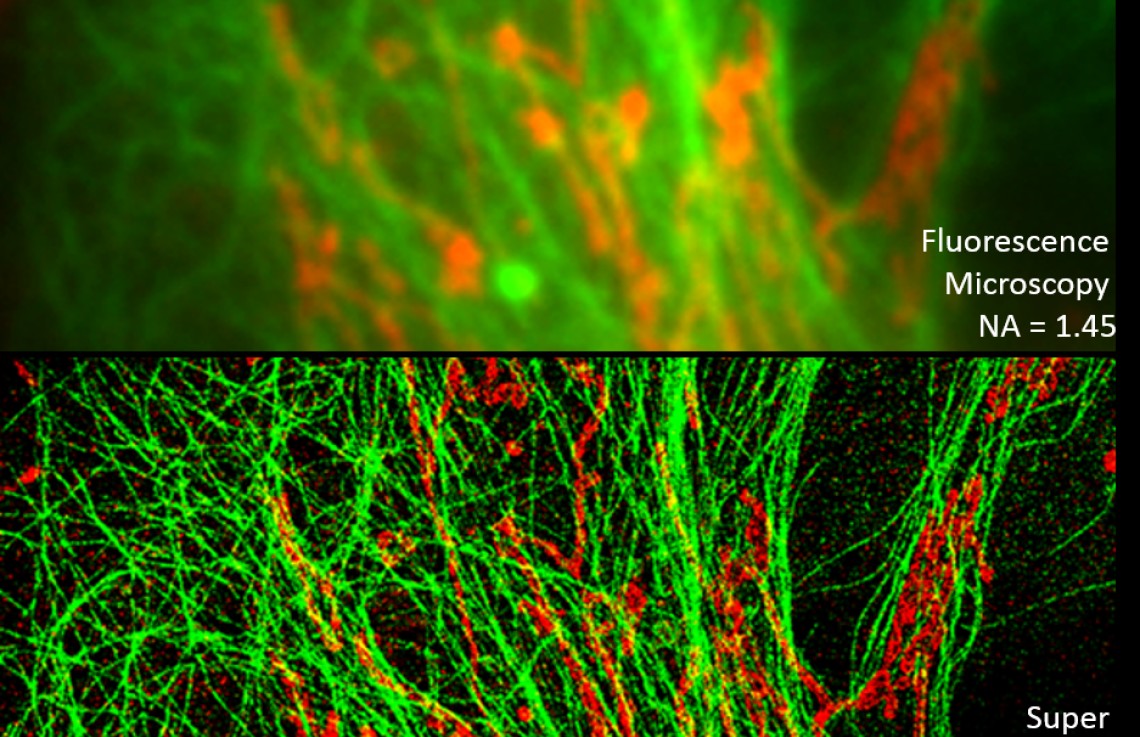PEAR
Enabling Next-Generation Biological Imaging

In Brief
- Challenge: Future Innovator Prize 2018
- Challenge Type: SFI Future Innovator Prize
- Status: Complete
- Phase: Special Prize winner
The Challenge
Super-resolution microscopy offers exciting opportunities to researchers in the life sciences, enhancing our understanding of the inner workings of cells including cancer cell growth and thus enables the development of new therapies.
Biologists require imaging at spatial resolutions substantially below 60 nm allowing for the understanding of molecular interactions. Despite the pressing need, it is currently not possible to visualize individual molecules as they dynamically interact. The reason is that optical visualisation of subcellular interactions, such as the effect of drugs on cells, is limited by the diffraction limit. In addition, current super-resolution technologies which have been awarded the Nobel Prize in 2014 are limited because they are inherently sequential in nature (e.g. need to scan across the entire sample). This results in a limited signal to noise ratio and a slow, multi-step acquisition of images, making fast frame rates difficult to achieve.
The Solution
“Plasmonic Electronically Addressable super-Resolution” (PEAR) is a highly innovative imaging solution that goes beyond the current state of the art, enabling super-fast real-time nanoscale optical microscopy:
The IP protected method achieves imaging far beyond the diffraction limit with an optical chip which consists of addressable plasmonic elements. Imaging is achieved by delivering timed, modulated electrical currents to the nanoscale elements which selectively tunes the elements in and out of the plasmonic resonance condition. The photonic chip, which is at the heart of PEAR, contains an electronically addressable array of such elements. These pixels can then be switched from "on-resonance" to "off-resonance" via the modulated current. This results in appreciable changes of the electric near-field strength above the pixels, which can be detected in parallel via optical heterodyne detection. Because of the known nano-localised addressability of this modulation, a dedicated computer algorithm is capable of extracting the contained additional information as a super-resolution image at very high frame rates. This leads to unprecedented real time imaging of dynamic interactions at the nanoscale.
PEAR is a disruptive, nanotechnology powered imaging solution which enables super-fast, real-time nanoscale optical microscopy (nanoscopy) resulting in
- unravelling of pathogen infectious mechanisms,
- leading to improved drug development and delivery,
- resulting in new breakthrough therapies.
The Team
Team Lead: Prof. Dominic Zerulla, University College Dublin
Team Co-Lead: Dr Dimitri Scholz, University College Dublin
Societal Impact Champion
Peter Doyle